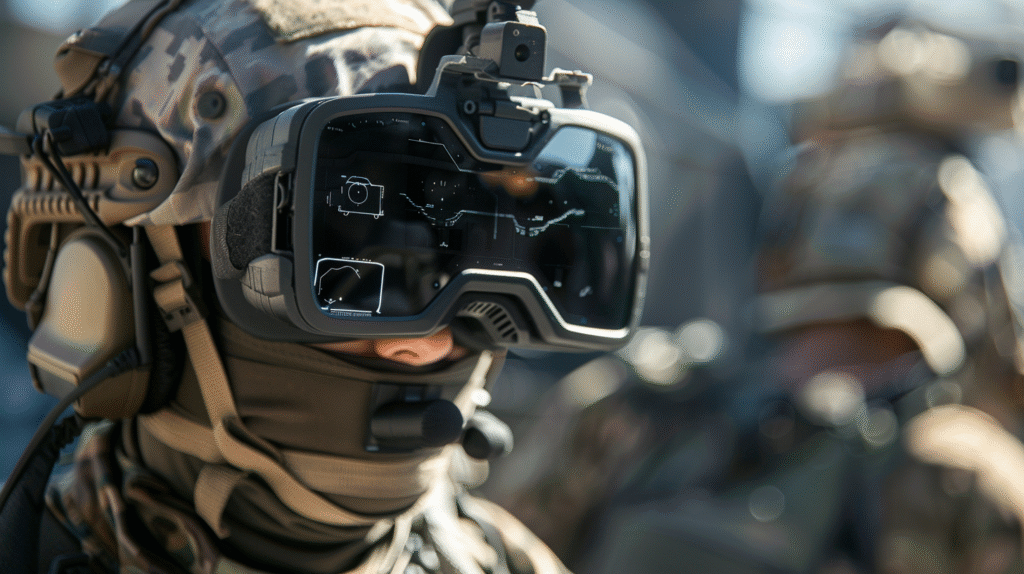Comprehensive Study and Solution Analysis Guide: Enhancing Procurement and Testing of Adversarial Unmanned Systems Technology
This guide provides a structured analysis of the challenges in current procurement practices for unmanned systems technology, particularly in the context of rapid adversarial advancements. It critiques periodic competition-based models and proposes a continuous, data-driven testing and procurement framework. The analysis is derived from the provided content, emphasizing the need for real-time, independent evaluation to empower military personnel, streamline acquisitions, and foster industry innovation. The guide is organized into sections for clarity: problem identification, solution proposal, implementation mechanics, benefits, potential challenges, and recommendations.
1. Problem Identification and Analysis
The rapid evolution of adversarial unmanned technology demands procurement processes that adapt in real time. Traditional approaches, such as bi-annual or monthly competitions, fall short due to their episodic nature. Below is a breakdown of key issues:
1.1 Limitations of Periodic Competitions
- Insufficient Pace: Monthly or bi-annual events cannot match the “speed at which adversarial unmanned tech develops.” Technology advances occur continuously, rendering competition outcomes outdated by the time they influence purchases.
- Artificial Constraints: Competitions create simulated scenarios that do not replicate real-world kinetic (destructive or high-impact) conditions, leading to unreliable performance predictions.
- Guesswork in Procurement: Purchases often rely on speculative data (“what might work”) rather than empirical evidence, resulting in inefficient resource allocation and suboptimal equipment for soldiers.
1.2 Broader Systemic Challenges
- Lack of Continuous Data: Without ongoing, independent testing, planners operate on incomplete or biased information from suppliers.
- Exclusion of End-Users: Soldiers and frontline personnel are often sidelined from procurement, missing opportunities for practical input.
- Market Signals: Industry investments are driven by “uninformed FOMO” (fear of missing out) rather than verified performance, stifling innovation and diversification.
- Geopolitical Implications: In regions like the EU, servicemen are “relegated to tactical waiting,” unable to actively shape technologies that could enhance their combat effectiveness.
| Issue | Description | Impact |
| Pace Mismatch | Competitions are too infrequent for fast-evolving tech. | Outdated equipment in dynamic threat environments. |
| Simulated vs. Real Testing | Lack of hardcore, kinetic red teaming. | Overestimation of tech reliability in actual conflicts. |
| Data Dependency | Reliance on supplier claims over independent verification. | Wasted budgets on underperforming systems. |
| User Exclusion | Soldiers not integrated into testing/procurement. | Gear that doesn’t meet operational needs. |
This analysis highlights the need for a shift from discrete events to a perpetual, evidence-based system that recreates “the closest thing to actual conflict environments.”
2. Proposed Solution: Continuous Testing and Procurement Flywheel
The core proposal is a “continuous testing and purchase flywheel” that replaces competitions with ongoing, independent kinetic testing. This model emphasizes hardcore red teaming—simulating adversarial conditions through destructive testing—to generate “hard, independent data” for informed decisions. Key principles include:
- Data-Driven Purchases: Base acquisitions on verified performance, not speculation.
- Independence and Standardization: Testing centers operate autonomously to ensure objectivity.
- Integration of Stakeholders: Involve soldiers, civilians, and industry for holistic insights.
- Scalability and Adaptation: Monthly cycles allow rapid iteration and market diversification.
In essence, this creates “agency” for military personnel by enabling kinetic contact simulations that level the playing field against adversaries.
3. Implementation Mechanics
The solution involves a networked ecosystem of testing centers, standardized processes, and iterative procurement. Below is a step-by-step breakdown:
3.1 Infrastructure Setup
- Testing Centers: Establish tens of centers across the US and EU, government-owned but with budgetary independence to avoid bureaucratic delays.
- Budget: Hundreds of thousands to low millions per center, making it “extremely low-risk” for overall procurement budgets.
- Operation: Run by soldiers for hands-on testing “until the tech breaks,” with commercial scouting support from industry civilians collaborating with military personnel.
- Testing Protocol: Focus on kinetic testing (e.g., destructive simulations mimicking enemy contact) in environments that replicate real conflicts.
3.2 Data Generation and Utilization
- Standardized Data Sets: Centers produce uniform metrics on performance characteristics for various unmanned systems categories.
- Planning Integration: Planners use this data to define purchases three months in advance, focusing on “what works” rather than hypotheticals.
- Measurement: Evaluate planners based on the actual performance of procured kits, encouraging accountability and adaptation.
3.3 Competitive and Iterative Elements
- Leaderboards: Foster competition among centers via performance rankings per category, driving excellence without formal competitions.
- Flywheel Process:
- Continuous compact requirements writing based on latest data.
- Monthly purchase rounds of small batches from diverse suppliers, adhering to evolving standards.
- Independent verification of performance through testing (which doubles as training).
- Lock in larger-scale purchases for top performers.
- Set future performance benchmarks to raise the bar.
- Personnel Rotation: Soldiers rotate through centers to maximize experience sharing across units.
3.4 Procurement Cycle Timeline
| Phase | Frequency | Key Activities | Outputs |
| Testing & Data Collection | Continuous | Kinetic red teaming; data standardization. | Performance datasets; leaderboards. |
| Requirements Writing | Ongoing | Define specs based on verified data. | Compact, actionable requirements. |
| Small-Batch Purchases | Monthly | Acquire batches from varied suppliers. | Diverse platforms for testing. |
| Performance Verification | Post-Purchase | Independent testing = training. | Verified metrics; training opportunities. |
| Large-Scale Decisions | Quarterly (3 months out) | Scale up based on results; set new bars. | Optimized procurements; market signals. |
This cycle ensures “more platform variety and market diversification” by opening doors to new suppliers based on empirical success.
4. Benefits and Impacts
The flywheel model delivers multifaceted advantages across stakeholders:
4.1 For Military Personnel
- Hands-on access to “the latest gear for training,” building skills in realistic scenarios.
- Empowerment for EU servicemen to “participate in shaping the future technological landscape,” fostering a sense of agency and confidence in winning fights.
- Experience sharing via rotations, enhancing unit-wide readiness.
4.2 For Planners and Procurement
- Elimination of “RfPs for tech that makes no sense” through data-backed decisions.
- Reduced risk via small, independent budgets and continuous adaptation.
4.3 For Industry
- Clear “market signals” based on verified performance, incentivizing “more significant (i.e., less uninformed FOMO-) investment.”
- Acts as a “catalyst” by pulling soldiers into the process, creating demand for innovative, reliable tech.
4.4 Broader Strategic Impacts
- Levels the playing field through kinetic simulations, allowing the US and EU to counter adversaries effectively.
- Stimulates innovation by rewarding performance, leading to diversified markets and resilient supply chains.
| Stakeholder | Key Benefits |
| Soldiers | Latest gear; realistic training; agency in tech shaping. |
| Planners | Data-driven decisions; performance-based accountability. |
| Industry | Reliable signals; increased investment; market entry opportunities. |
| Overall Military | Adaptive procurement; enhanced combat readiness. |
5. Potential Challenges and Mitigations
While promising, the model faces hurdles:
- Budgetary Independence: Risk of mismanagement—mitigate via strict audits and performance-linked funding.
- Scalability: Managing tens of centers—address through phased rollout and standardized protocols.
- Data Security: Protecting sensitive performance data—implement robust cybersecurity measures.
- Adoption Resistance: Bureaucratic inertia—overcome by demonstrating quick wins in pilot centers.
- International Coordination: US-EU alignment—foster through joint oversight bodies.
6. Recommendations and Conclusion
To implement this flywheel:
- Start with a pilot in 5-10 centers to validate the model.
- Integrate AI-driven analytics for faster data processing (if feasible within existing tools).
- Monitor metrics like procurement efficiency and soldier satisfaction quarterly.
In conclusion, shifting to continuous hardcore red teaming and data-driven procurement eliminates inefficiencies, empowers users, and catalyzes innovation. This approach not only addresses the speed of tech development but also recreates conflict-like testing to ensure military superiority. By fostering “agency,” it positions the US and EU to win in adversarial environments through informed, adaptive strategies.





